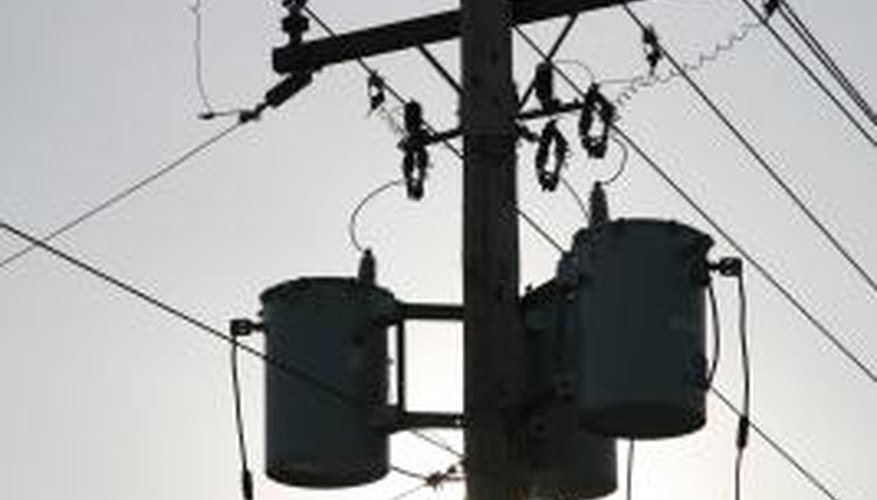A telegraph pole is a structure secured into the ground and used to provide overhead support for public utility equipment like power lines, telephone wires and other types of communication cable, street lights and traffic related equipment. These poles range in height and material, and they are anchored into the ground by different methods. In some cases, a single pole may be designed to support numerous types of public utility equipment.
Transmission Poles
Transmission telegraph poles carry high voltage electricity from a source, such as a power plant, to a substation, where voltage is then reduced and fed to customers through lower voltage lines. These lower voltage lines are supported by distribution poles. Because transmission poles support lines carrying higher voltage, they are often taller than distribution poles, generally standing from 60 to 140 feet tall. Transmission telegraph poles are made of wood or metal and often require a concrete foundation for support.
- Transmission telegraph poles carry high voltage electricity from a source, such as a power plant, to a substation, where voltage is then reduced and fed to customers through lower voltage lines.
- Because transmission poles support lines carrying higher voltage, they are often taller than distribution poles, generally standing from 60 to 140 feet tall.
Distribution Poles
Distribution poles comprise three common types: tangent, guyed and self-supporting. Tangent telegraph poles, usually arranged in a straight line with other poles, do not have any external type of support and normally are made of wood. Guyed poles are constructed with an angled support cable attached to the pole and anchored into the ground. This cable, called a guy-wire, provides resistance from additional forces of weight acting on the pole. A self-supporting telegraph pole is utilised when guy-wires cannot be used to compensate for additional load. This type of telegraph pole is common when overhead lines form a corner or additional equipment, like a transformer, is placed on the pole. Self-supporting poles are commonly constructed from concrete or steel.
- Distribution poles comprise three common types: tangent, guyed and self-supporting.
- A self-supporting telegraph pole is utilised when guy-wires cannot be used to compensate for additional load.
Light/Traffic Poles
Telegraph poles used to support street lights, traffic signals and other equipment for assisting transportation are often self-supporting structures. In some cases, a pole may support a street light and a horizontal mast with traffic lights and signs attached. Telegraph poles may also be placed on each side of a roadway, with a cross-section attached to each pole stretching across the road to support an overhead message sign. Additionally, telegraph poles often support various types of security equipment, such as surveillance cameras or traffic sensors. Other common utility light poles include those used along interstate highways to support lighting fixtures that can be lowered to the ground for maintenance, and poles supporting lights along residential streets and in private car parks. These types of pole designs often utilise large anchor bolts, which are secured to a concrete foundation built into the ground.
- Telegraph poles used to support street lights, traffic signals and other equipment for assisting transportation are often self-supporting structures.
- In some cases, a pole may support a street light and a horizontal mast with traffic lights and signs attached.
Safety Features
Most telegraph poles supporting electrical wires or related equipment have a static wire running between poles at the very top. This wire is connected to a grounding device called a ground conductor and aids in preventing damage to the pole and the electrical system in the event of a lightning strike. If lightning strikes the pole, the electrical surge is directed through the static wire to the ground conductor wire, which is connected to a grounding rod at the base of the pole. The grounding rod sends the electrical surge into the earth.
- Most telegraph poles supporting electrical wires or related equipment have a static wire running between poles at the very top.
- This wire is connected to a grounding device called a ground conductor and aids in preventing damage to the pole and the electrical system in the event of a lightning strike.
